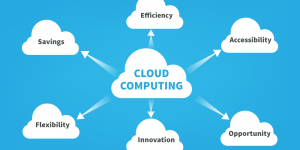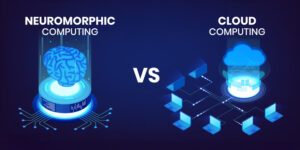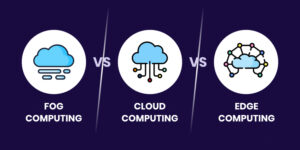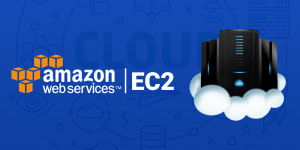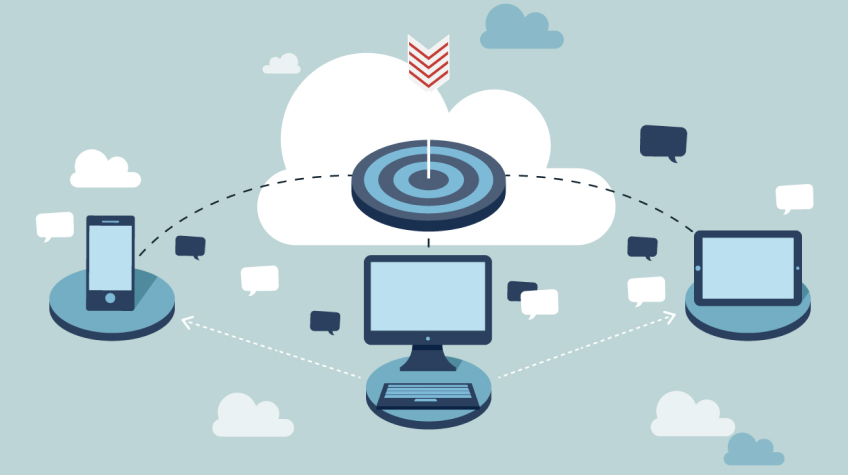
Fog computing also known as fog networking or fogging, is a decentralized computing approach in which storage and data processing are shifted closer to the edge of a network, near the data-generating devices. Compared to conventional cloud computing where the majority of processing and storage occurs in big centralized data centers, Fog computing focuses on a decentralized computing process. It makes it easier for end devices and computing data centers to operate networking, storage, and computing services.
Fog computing is developed to increase the efficiency and promote the data processing capacities. Due to the extensive use of IoT (Internet of Things) devices across varied sectors, a huge amount of data is generated daily. It is hard to handle such an amount of data with traditional cloud computation because of latency, volume, and bandwidth requirements. Fog computing proves productive in handling a large amount of data effectively.
Therefore, Fog computing brings several advantages such as in terms of latency, bandwidth, and real-time applications. However, it has its share of limitations as well. In this Informative article, learn the advantages and disadvantages of Fog computing.
Advantages and Disadvantages of Fog Computing
From increasing efficiency to reducing latency and increasing reliability to improve real-time applications, Fog computing brings several advantages. Here are some key benefits of implementing fog computing.
1. Minimizing the Latency
Fog computing proves effective in reducing latency issues when processing a huge amount of data. In Fog computing, the distance traveled by data is reduced because nodes are closer to end devices. This proximity of nodes with end devices results in faster response times and proves effective in improving the user experience. So, Fog computing is an ideal solution to reduce the latency problem in data processing.
2. Improves Bandwidth
Fog computing is regarded for enhanced bandwidth that helps varied sectors handle data efficiently. Fog computing is capable of reducing network congestion and increasing overall bandwidth by moving data processing and storage closer to the edge. By distributing processing and storage among several fog nodes, latency is decreased and dependability is increased.
3. Promotes Reliability

Fog computing is loaded for its reliability and ensures data access in case of network failures or infrastructure issues. Redundancy and fault tolerance are two benefits of fog computing that can guarantee the availability of data and services. Therefore, reliability factors make fog computing a preferred choice for data storage and processing.
4. Improved Real-Time Applications
Fog computing is extensively preferred in IoT, AR/VR, and autonomous vehicles as it is ideal for real-time applications. Fog computing is known for low latency and reduced bandwidth consumption making this computing approach ideal for real-time applications.
5. Enhanced Data Privacy and Security
Fog computing ensures enhanced data privacy and security as it processes data locally without transmitting it over to a network. It safeguards sensitive data by minimizing the need of transmitting to a network. Fog computing can lower infrastructure and energy expenses by offloading processing duties from centralized data centers.
Disadvantages of Fog Computing
It is a fact that Fog computing has several advantages and contributes to increasing efficiency, reducing latency, and enhancing data security. But it comes with some disadvantages related to complexity, security, interoperability, scalability, and cost.
1. Complexity: Distributed fog computing’s deployment and management need proper expertise and methods, which may be challenging to accomplish.
2. Security Challenges: Since an increased amount of devices and data is going to be processed locally at the edge, security vulnerabilities are inevitable. Security concerns are important when it comes to protecting fog computing nodes as well as data.
3. Interoperability: Since different fog computing devices and platforms may not come from the same vendor or have different versions, making them work together is often difficult.
4. Scalability: When a fog computing infrastructure is implemented to cater to a growing number of clients, scalability is not easy, especially in dynamic conditions.
5. Cost: Despite the potential of saving on costs in some areas, the biggest disadvantage of Fog computing is the setup cost which is a range of hardware, software, and management.
Therefore, fog computing has various benefits and it is beneficial, especially in the aspect of latency, bandwidth, and real-time applications. However, it comes with the issue of complexity in the architecture, security, integration, and expense of the network. It is therefore important to ensure that the plan is properly developed, put into practice, and controlled to optimize its benefits.
Implementing Fog Computing: Factors to Consider
Fog computing has a wider application from diverse industrial and manufacturing settings to hospitals and other healthcare facilities. However, when it comes to implementing or using Fog computing, several factors need consideration to ensure optimal results. Discover some important considerations in terms of implementing Fog computing.
Consideration for Technical Factors

- Latency: It is necessary to ensure that current fog nodes are deployed in proximity to the end devices to enable minimum latency and real-time response.
- Bandwidth: Generalize the channel capacity needed by fog computing to run its operations based on quantities such as volume of data and level of processing needed.
- Hardware and Software: Choose the right hardware and software components that are mutually compatible, easily scalable, and which consume less power.
- Security: Ensure the use of proper security measures to enhance the security of the fog nodes and the data that is stored in them.
- Interoperability: Make sure that fog nodes can interact with other devices and programs and are compatible with different platforms.
- Scalability: Develop the fog computing infrastructure in such a way that it would be expandable in the future if necessary.
Operational Factors to Consider
- Management: Identified and Incorporated tools and best practices in the fog computing networks to assess, correct, and manage issues that may affect the networks.
- Cost: Take into account the expenses incurred with the hardware, the software, the network, and other expenses including maintenance.
- Reliability: It is also very important to make certain that the fog computing infrastructure is highly and more reliable to failures.
- Integration: Prepare for a high level of integration between fog computing with the current IT environment and solutions.
- Data Privacy and Compliance: Comply with local and international regulations for handling data while ensuring that data is collected and processed professionally and securely.
- Energy Efficiency: Efficient use of energy resources to reduce the costs and minimize impacts on the natural environment by the fog nodes.
Conclusion
In conclusion, Fog computing is an effective decentralized computing model that promotes efficiency, minimizes latency and enhances security by storing and processing data near the devices generating it. The computing model has several advantages including proximity, real-time application, enhanced bandwidth, reliability, and enhanced security. But also has some disadvantages in terms of complexity, scalability, and cost.

